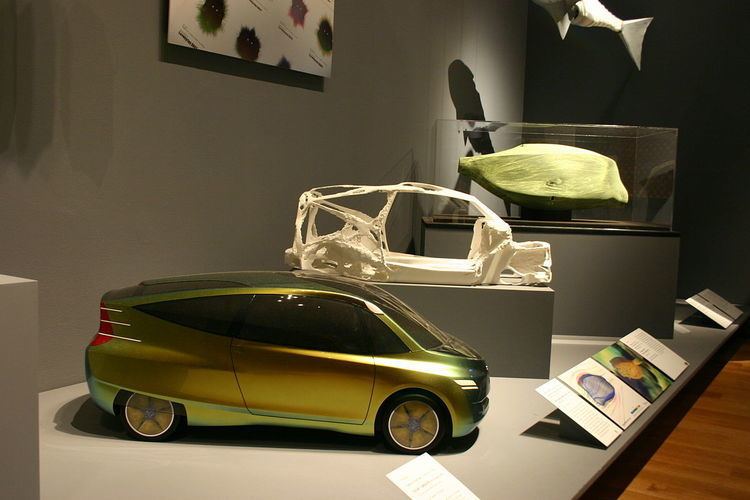Wheelbase 101 in (2,565 mm) | Length 167 in (4,242 mm) | |
 | ||
Engine 1.9-liter four-cylinder direct-injection turbodiesel. 138 hp (103 kW) Transmission Autotronic CVT transmission | ||
The Mercedes-Benz Bionic was a concept car created by DaimlerChrysler AG under the Mercedes Group. It was first introduced in 2005 at the DaimlerChrysler Innovation Symposium in Washington, D. C. The Bionic was modelled after a type of fish, the yellow boxfish, Ostracion cubicus, and also has 80% lower nitrogen oxide emissions with its Selective Catalytic Reduction technology.
Contents
Engine and Performance
The Bionic is powered by a 103 kW direct-injection diesel engine that gives out around 70 MPG (US) (~3.36 L/100 km). This engine also gives out around a total of 140 horsepower (100 kW) and a little over 221 ft·lbf (300 N·m) of torque at around 1600 rpm. The Bionic can go from 0-60 in about 8 seconds and has a top speed of a little over 190 km/h (118 mph) .
Design
The exterior design was modelled after the yellow boxfish (Ostracion cubicus), a marine fish that lives in coral reefs. Mercedes-Benz decided to model the Bionic after this fish due to the supposed low coefficient of drag of its body shape and the rigidity of its exoskeleton; this influenced the car's unusual looks. Other parts of the design include the fact that the rear wheels are partially fitted with plastic and that it's considered as a lightweight vehicle. Mercedes-Benz reported a drag coefficient of 0.19; for comparison, the production vehicle with the lowest ever Cd value was the GM EV1, at 0.195. While the Bionic had a much larger internal volume than the EV1, the Bionic's larger frontal area made the EV1 more aerodynamic overall, as drag is a product of the area and the drag coefficient.
